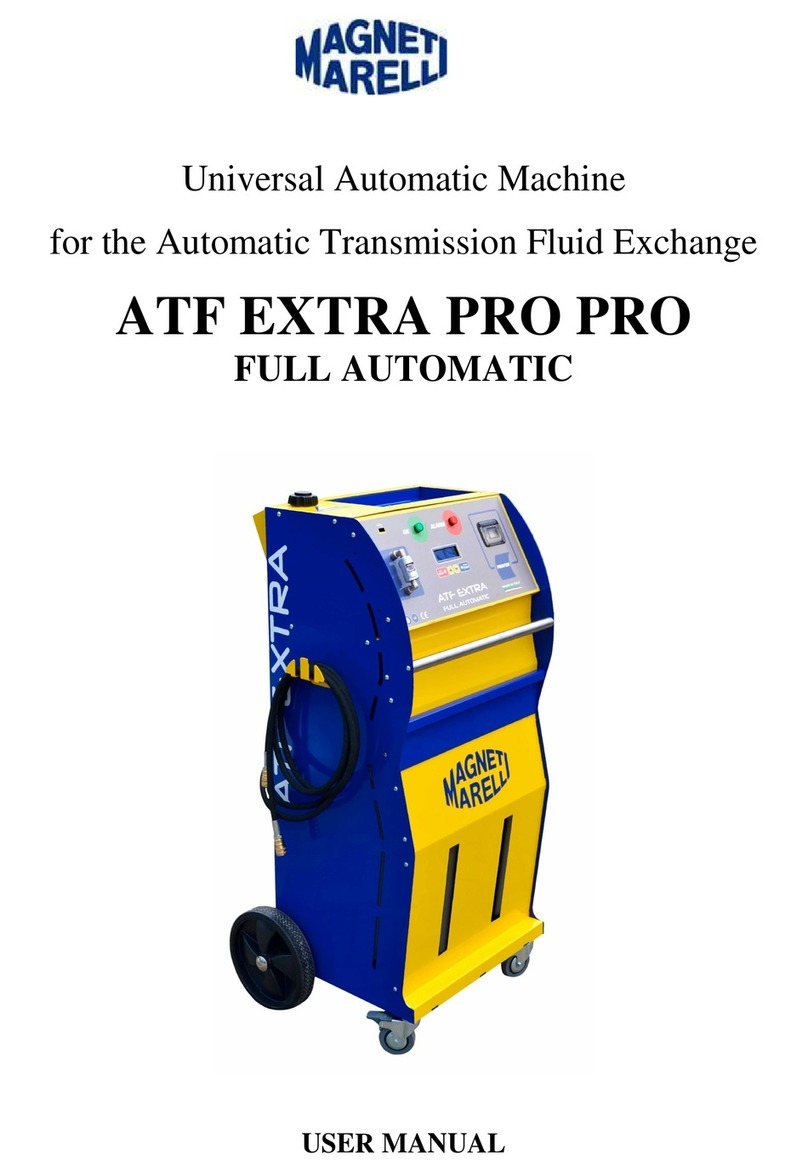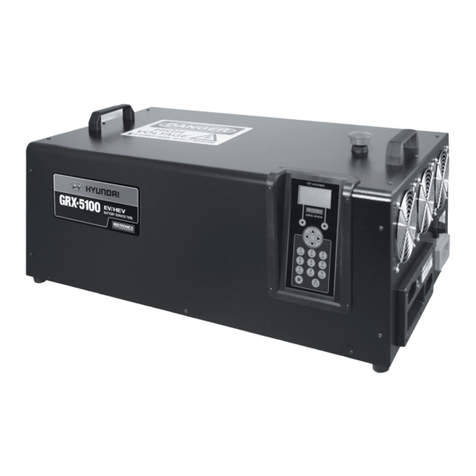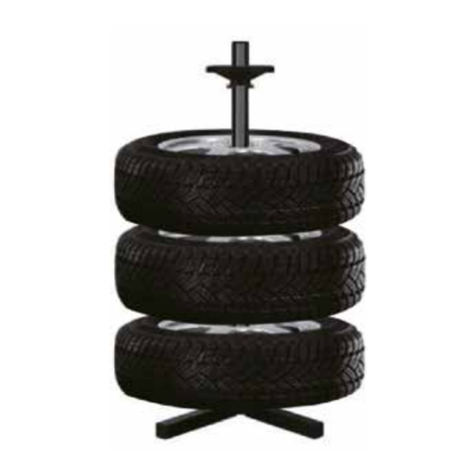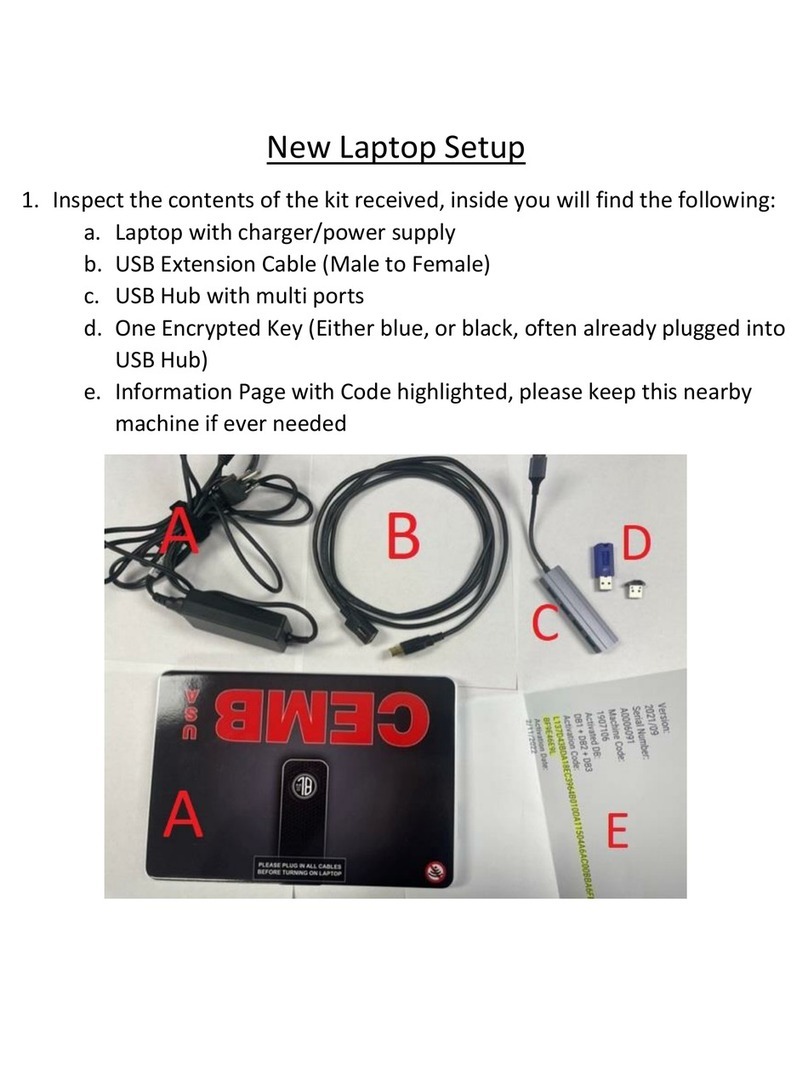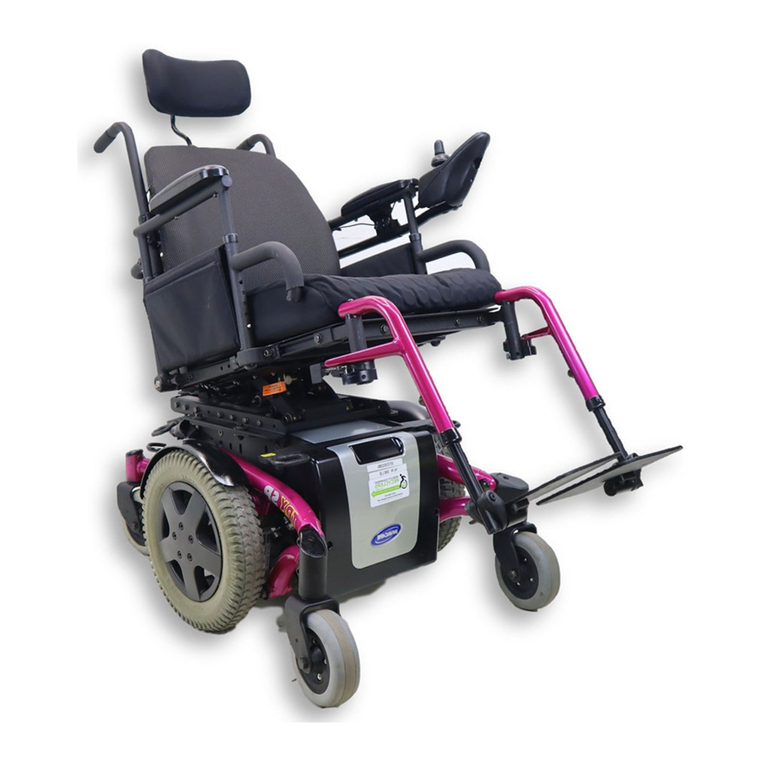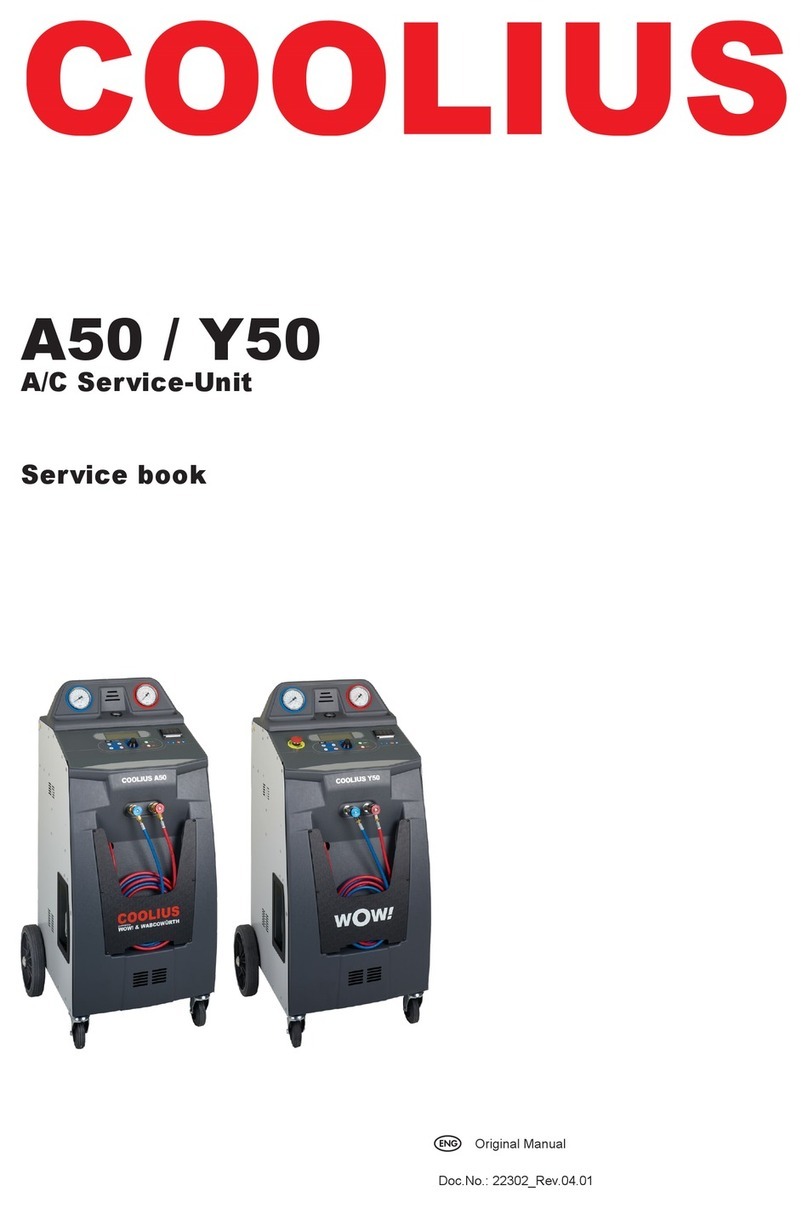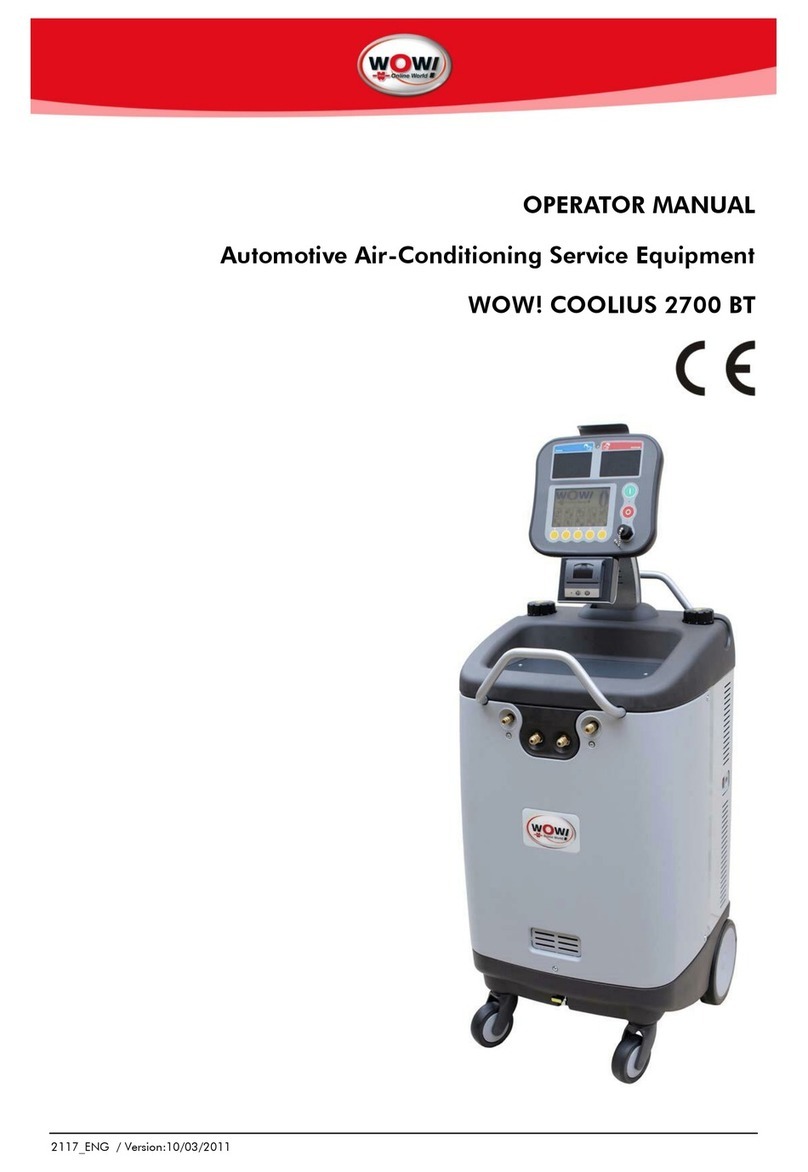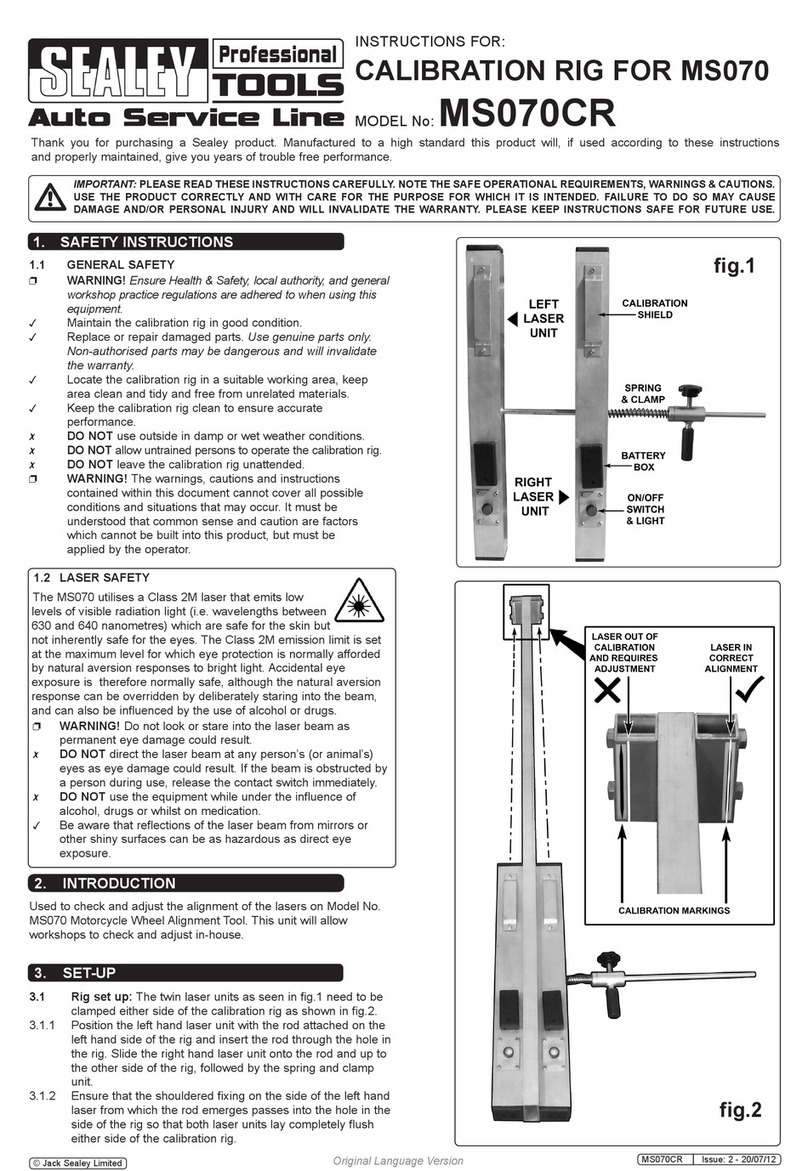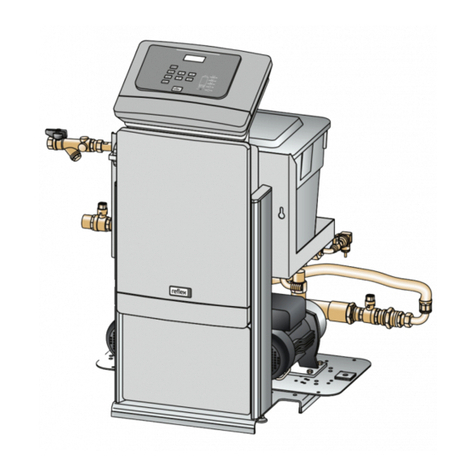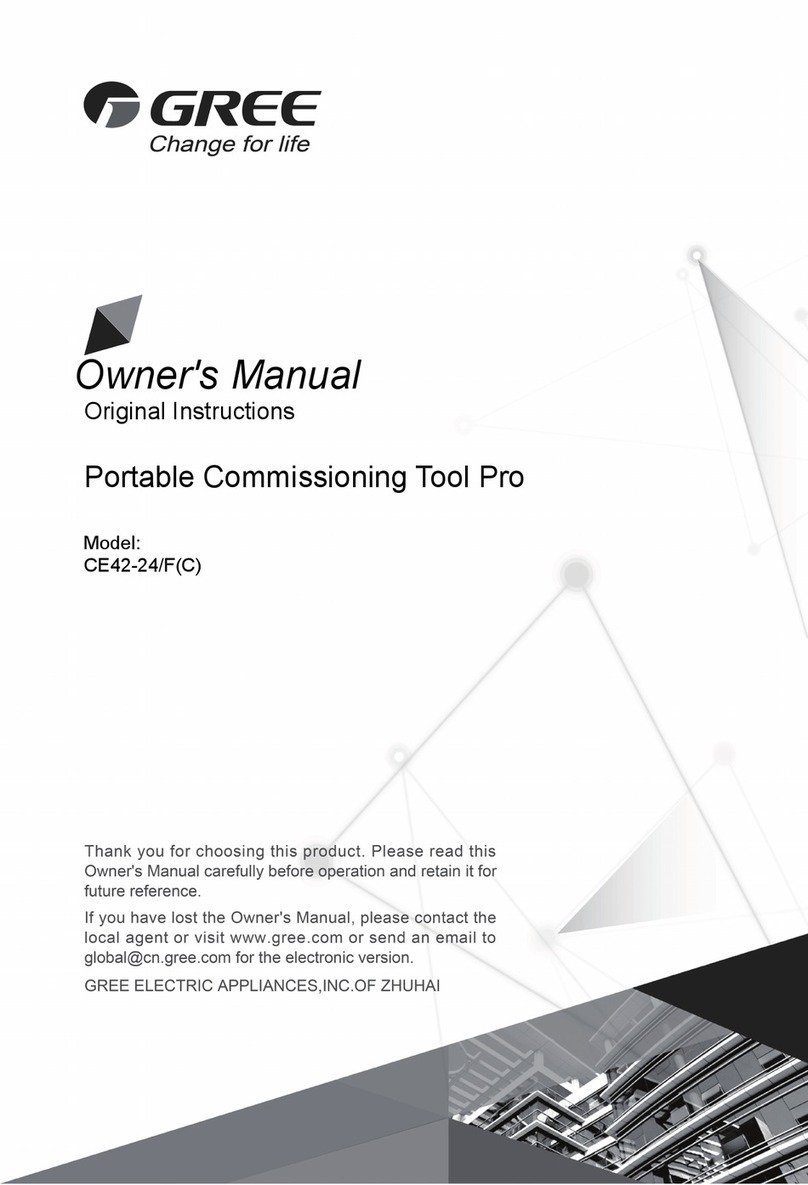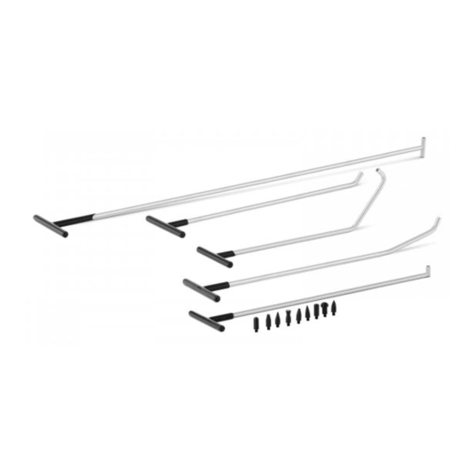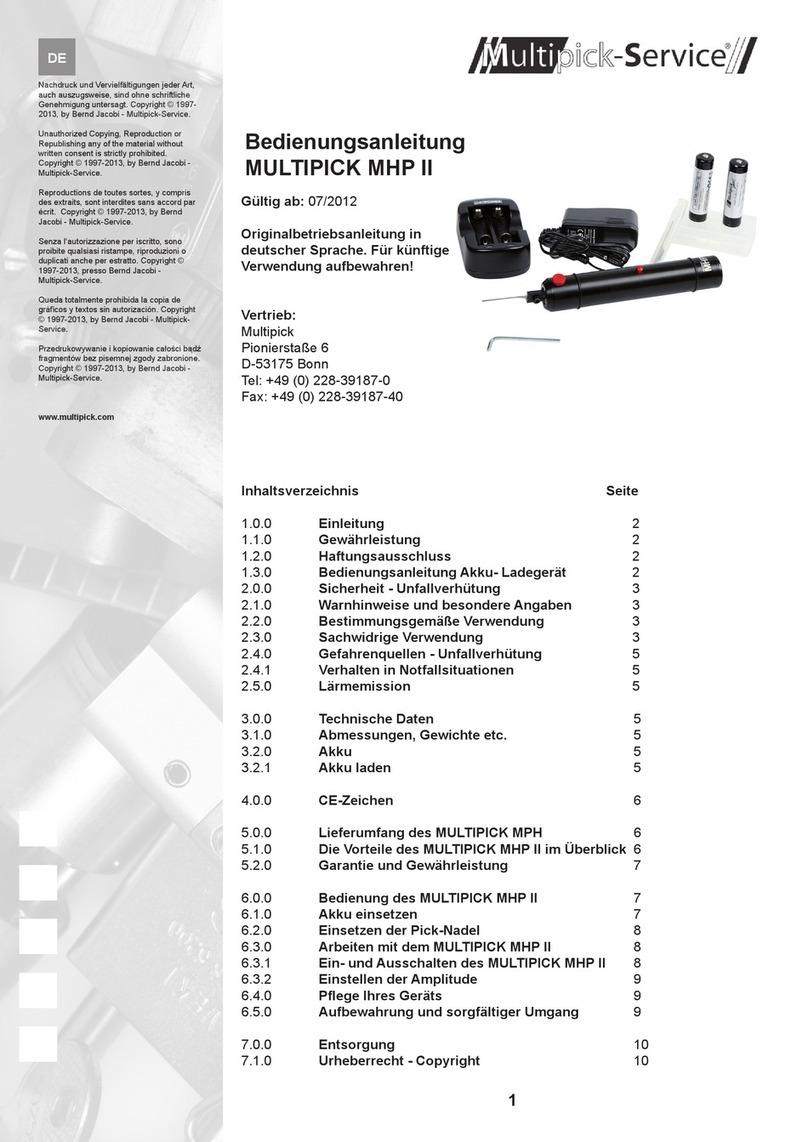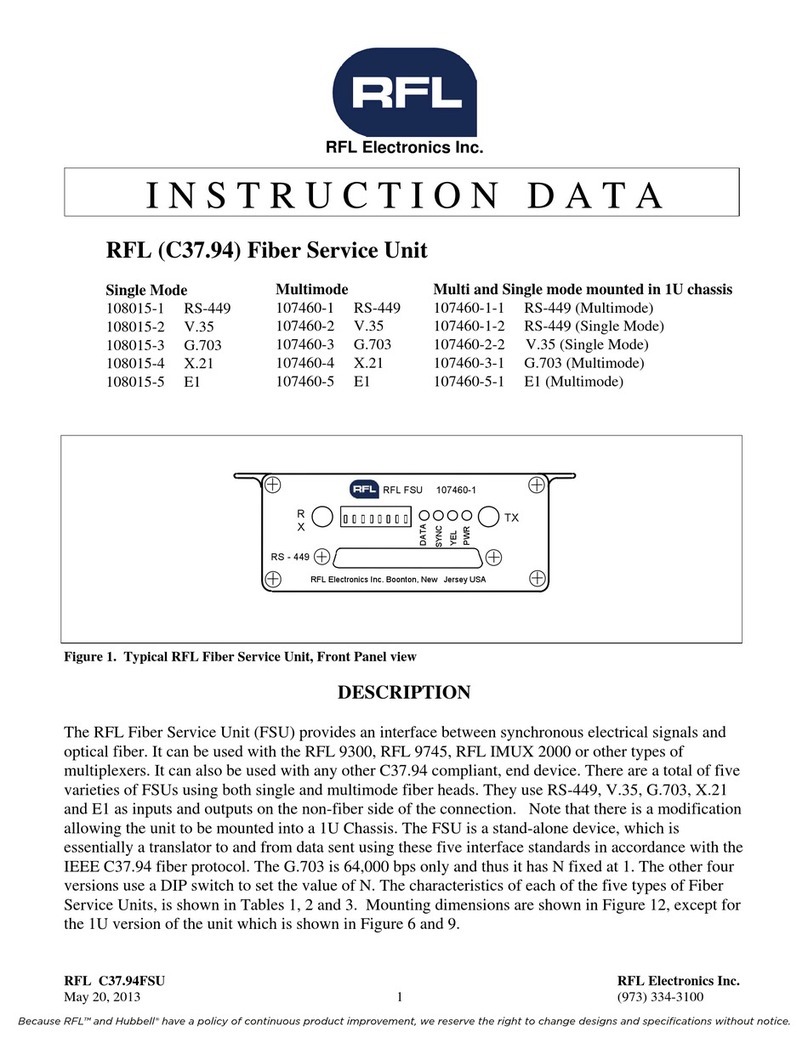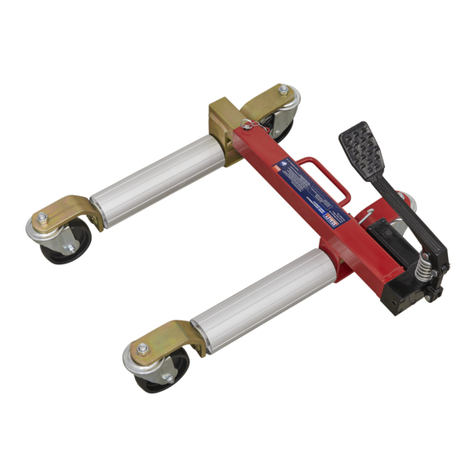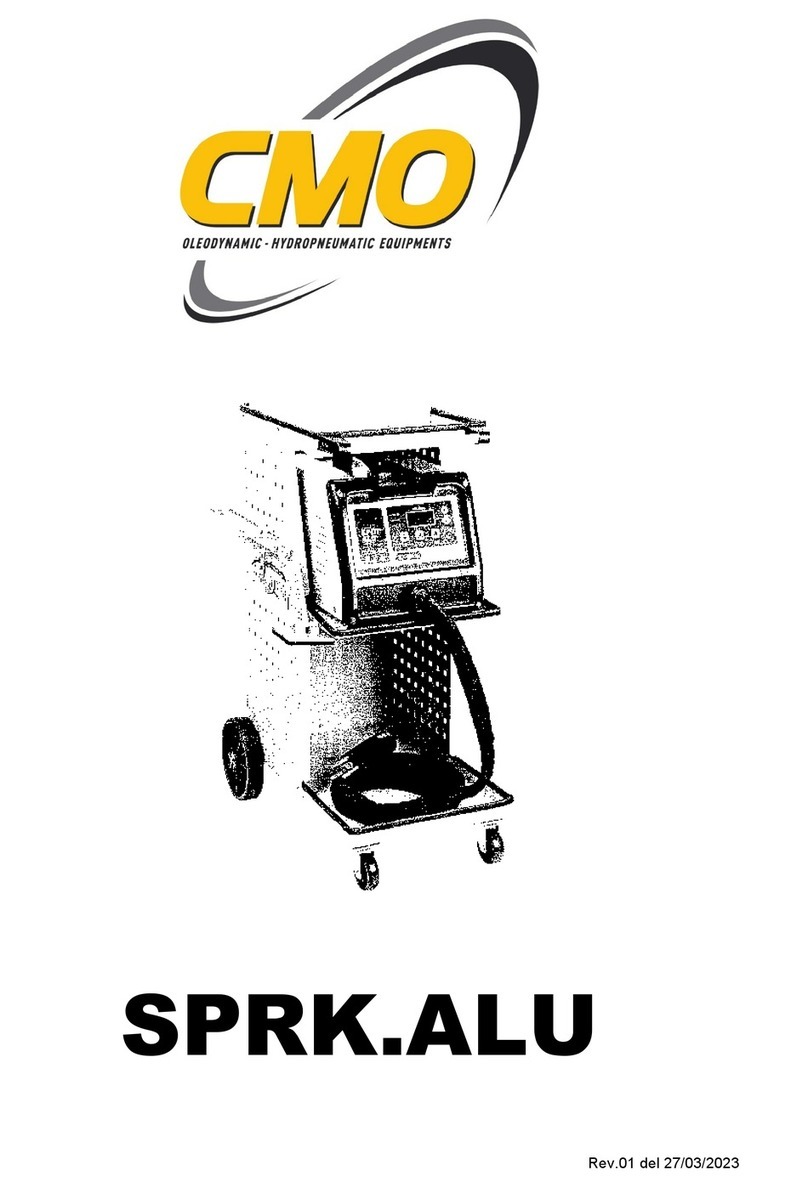
INSTRUCTIONS MANUAL
pag.8 - 12/11/2015
SAFETY RULES
This machine is a piece of equipment designed to recover R134a or R1234yf (depending on
machine model) from air conditioning systems (A/C) for vehicles. The machine must be used
by qualified personnel and can only be used correctly after having read this manual that also
contains the basic safety rules listed below:
-Wear gloves and safety glasses.
-Do not expose to directsunlight and rain.
-Before doing any task check the vehicle’s operating and maintenance handbook to
determine the type of refrigeration fluid used in the A/C system.
-No smoking in the vicinity of the machine and while working.
The ambient conditions for using the equipment are as follows:
Temperature between +10 and +50°C.
Pressure between 80 kPa (0,8 bar) and 110 kPa (1.1 bar).
Air with normal oxygen content, generally 21% by volume.
Laying-up the machine: when not in use the machine must be stored in a specific place with
the following characteristics:
1. The machine must be stored in a ventilated zone also during storage. It can be avoided
that are pit near the machine.
2. There must be no sources of ignition such as heat sources, naked flames, sparks of
mechanical origin (e.g. due to grinding), electrical material (especially the storage area for
the machine is not to have any electrical power sockets that are less than 900 mm above
floor level), stray electrical currents and cathode corrosion (check that the electrical
distribution system conforms to the relevant legal provisions), static electricity (check the
earth system for the premises' electricity distribution system), and lightning.
-Hose must be visually checked periodically, if they are damaged, or aged, substitute them.
-Use the machine away from heat sources, naked flames and/or sparks.
-Always make sure that when you switch off the engine the vehicle’s ignition key is turned to
the Fully Off position.
-Always connect the machine’s piping using the RED rapid coupling to the high pressure
branch of the A/C system.
-Always connect the machine’s piping using the BLUE rapid coupling to the low pressure
branch of the A/C system.
-Keep the connection pipes away from moving or rotating items or elements (cooling fan,
alternator, etc.).
-Keep the connection pipes away from hot items or elements (engine exhaust pipes, radiator,
etc.).
-Always fill the A/C system with the quantity of fluid recommended by the manufacturer.
Never exceed this quantity.
-Always check the oil levels priorto each operation.
-Always keep the oil at the correct quantity.
-Before connecting the machine to the electrical system, check that the power supply voltage
and frequencyare the same as the values indicated on the CE plate.
The bottle must be filled to 80% of its maximum capacity to leave a plenum chamber for
the gas to absorb any increases in pressure.
-Never touch the taps on the innerbottle.
-Throw the oil taken out of the A/C system and the vacuum pump into the relevant containers
for spent oils.
-Change the filters at the intervals laid down, using only filters recommended by the
manufacturer.
